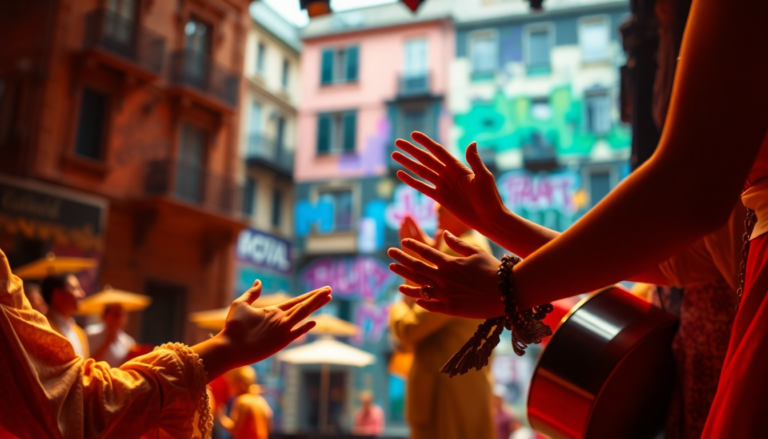Argomenti trattati
What happens when the worlds of crime, identity, and musical theater collide? Emilia Pérez dares to explore this audacious blend, taking audiences on a journey filled with vibrant visuals and heartfelt performances. Directed by the renowned Jacques Audiard, this film, an adaptation of Boris Razon’s 2018 novel Écoute, premiered at the Cannes Film Festival in 2024, captivating viewers with its unique storytelling and stunning backdrop.
The narrative unfolds
At the heart of the story is Rita Moro Castro, played by the brilliant Zoe Saldaña. A defense attorney in Mexico City, Rita is determined to make a difference in a world riddled with challenges. When she encounters a lucrative opportunity from a cartel leader, Manitas Del Monte, the plot thickens. Manitas, a character in search of personal transformation, dreams of transitioning to a female identity, introducing a powerful layer of complexity to the narrative. This journey is not merely about crime; it’s about self-discovery, resilience, and the quest for personal redemption.
From crime to musical extravaganza
The film doesn’t shy away from the darker aspects of its themes. As Rita helps Manitas navigate her transition, the story oscillates between profound introspection and exuberant musical numbers. The juxtaposition of these elements creates a dynamic viewing experience, capturing the audience’s attention while addressing the pressing issues of gender identity and societal expectations in contemporary Mexico. It’s a challenging balance, but one that Audiard manages to pull off with grace.
Filming in unexpected places
Interestingly, while the narrative is deeply rooted in Mexico, the entire film was shot in a studio in Saint-Denis, on the outskirts of Paris. This choice has sparked debates about cultural representation in cinema. Critics argue that capturing the essence of Mexico solely in a French studio can lead to cultural appropriation and a superficial portrayal of reality. Yet, Audiard defends his artistic decision, explaining that the film seeks to create a mythical narrative rather than a geographical realism. It’s a bold statement that invites viewers to reflect on the nature of storytelling itself.
Connecting with the characters
As the story unfolds, we follow Rita’s journey to Bangkok and Tel Aviv, where she consults with various surgeons about gender-affirming surgeries for Manitas. It’s a poignant moment that underlines the importance of understanding and supporting those seeking to forge their identities. When Rita eventually settles in London, we see a different side of her—a life filled with privilege yet tinged with the shadows of her past experiences. The narrative beautifully illustrates how our journeys shape us, sometimes in ways we least expect.
Intriguing connections and revelations
Years later, Rita reunites with Emilia Pérez, the transformed Manitas. Their reunion is laden with emotion, as Emilia seeks help to return to Mexico City, where she yearns to reconnect with her children and ex-wife, Jessi. The complexity of these relationships adds depth to the film’s exploration of identity and belonging. It’s fascinating how these connections unfold, revealing the intricate tapestry of human experiences intertwined with themes of love, loss, and hope.
The allure of the unseen
It’s also worth noting the curious role of Diego Fernando Diosa, credited as the “Location Scout: Mexico.” This raises questions about the authenticity of the film’s portrayal of Mexican landscapes. Could some scenes have been filmed on location, or are they entirely fabricated in the confines of a Parisian studio? It’s a mystery that adds a layer of intrigue to the viewing experience, urging audiences to question the nature of film and representation.
As we step back and reflect on the audacity of Emilia Pérez, we can’t help but appreciate the courage it takes to tackle sensitive subjects through the lens of musical theater. It’s a bold narrative that leaves us pondering our own identities and the roles we play in society. In a world where stories often get lost in translation, this film stands as a testament to the power of creativity and the unyielding human spirit.

